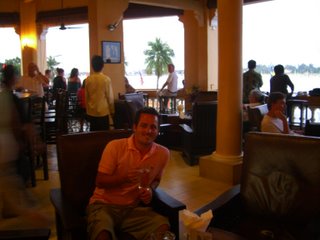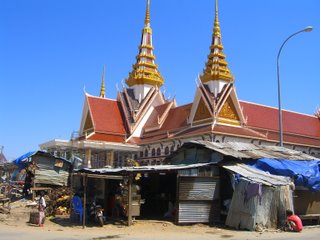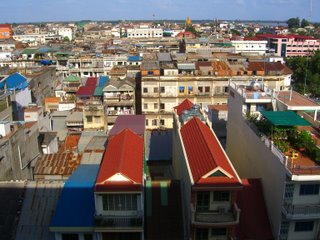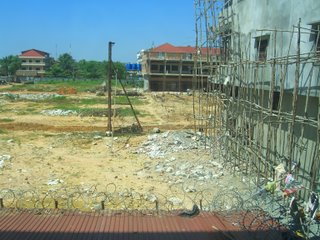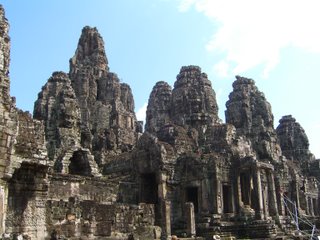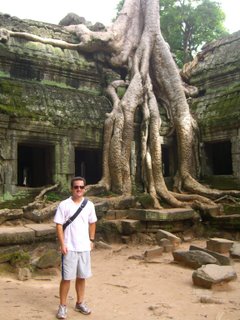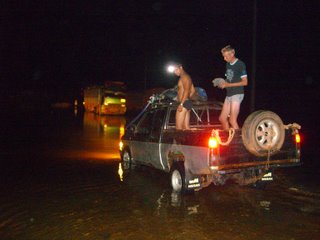


Travelling from Thailand to Cambodia is nothing short of an adventure. The road from Popeit, Cambodia to Siem Reap is notorious for being one of the worst border crossings in Asia. We just happened to do it when it was worse than ever.
We started with a 6 hour bus ride from Bangkok to the border. A tuk tuk took us to the border of Cambodia where border officials ripped us off. (just $5 each and there is really nothing you can do about it)
Crossing the border is total chaos as you are completely surrounded by people trying to get you in their taxi. Popeit is a border town that makes Tijuana look like Beverly Hills. After searching around a bit we realized that there is some sort of mafia that controls the taxis. (as we read in our guide book) We couldn't get anybody to negotiate with us as there were guys following us around telling other drivers that they couldn't deal with us. We needed a taxi to take us to Siem Reap which is about 100 miles away. There is no bus service and the only way to get there directly is a taxi. (the bus service stopped because the road is completely flooded) It is possible to take a taxi to another town, then take a boat... however, we wanted to get there that night. We had no idea what was in store for us.
We met a guy from Amsterdam who seemed to be the only other westerner in the town. We split a taxi for $66 that was to take us to Siem Reap. The taxi drove us for about 2 hours down the worst road I have ever seen. The potholes were deep and it was amazing that a sedan could even navigate it. I have never seen anything like it.
We finally arrived in a small town where our driver made us switch to a truck equipped with a snorkel (a device that allows a vehicle to drive in deep water). The POS truck was our only option so we had to hop in.
We road in the truck for 7 hours. The road was in fact flooded and we passed dozens of vehicles stranded in water up to our chest. Our truck got stuck several times and we had to get out and push it through the water. We couldn't believe what we were experiencing. It was absolutely an incredible journey.
The entire journey was in total darkness. We frequently had to stop and our driver paid people to walk in front of the truck to feel out the road (in the water). A picture above shows our driver checking out the deep water ahead. I couldn't get any pictures of the very deep water or the trucks stuck in the water as I had to keep my camera in my dry bag... I also had to be ready to jump out and push when needed. At one point the water inside the truck had covered the tape player in the dash. We had to pay a tractor to pull us with a chain through the deepest crossing.
I am rambling about the journey and words will never do it justice. I'll try to explain it to you all when I get home and I will fail. It was quite an experience and one I will never forget.


